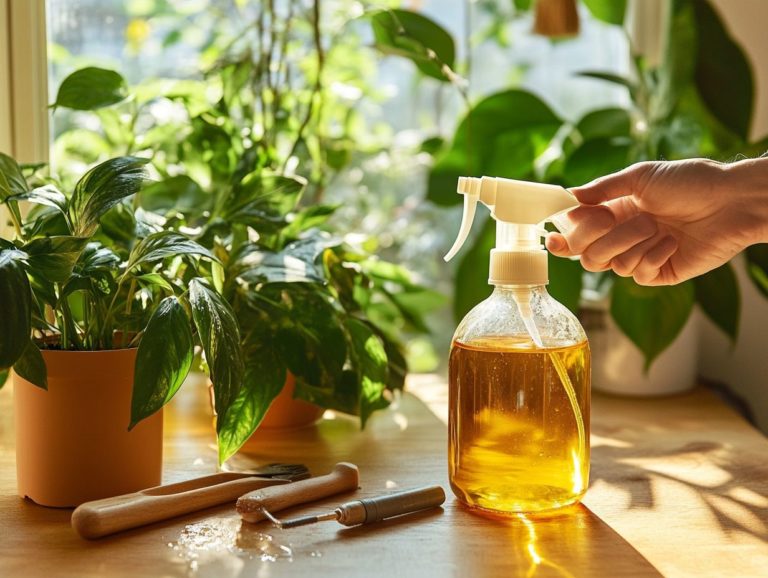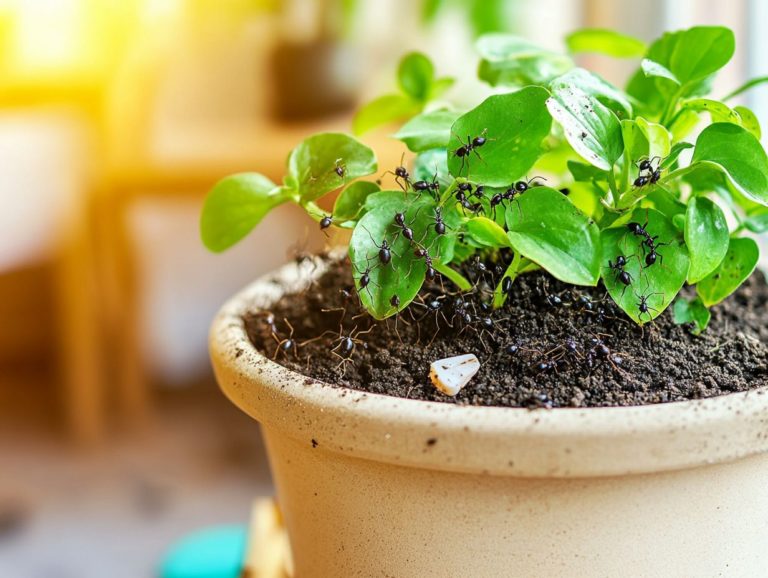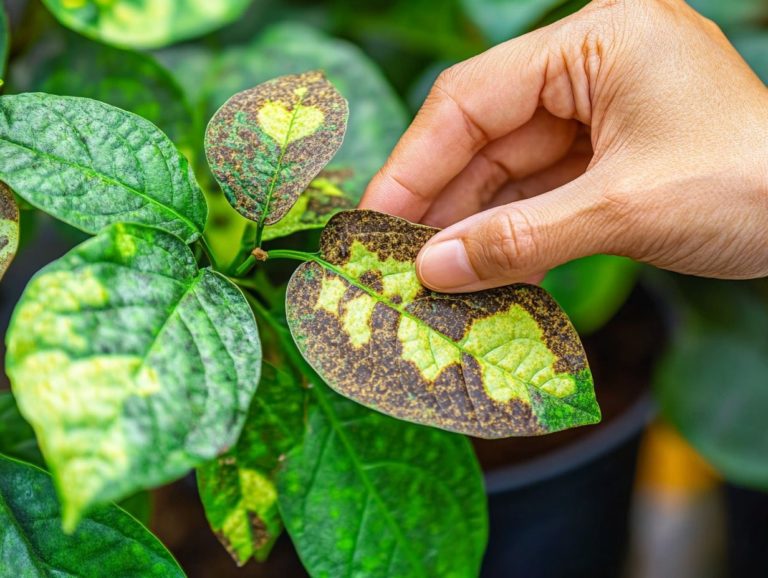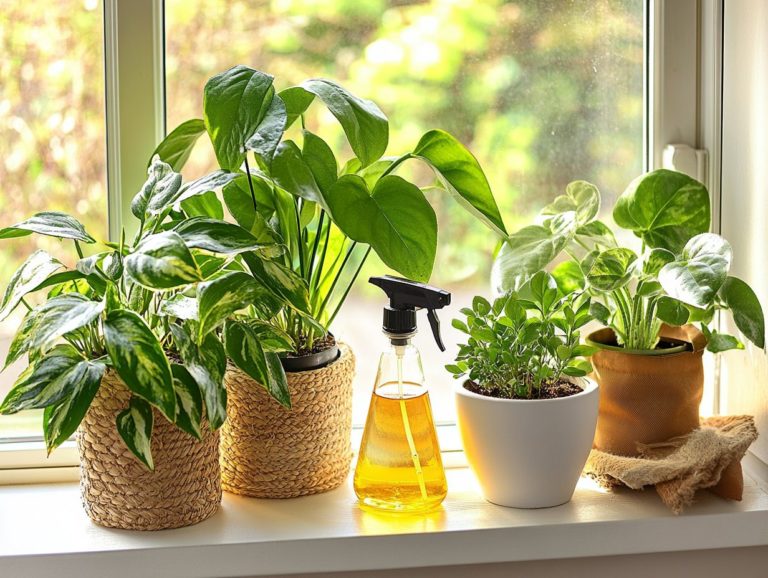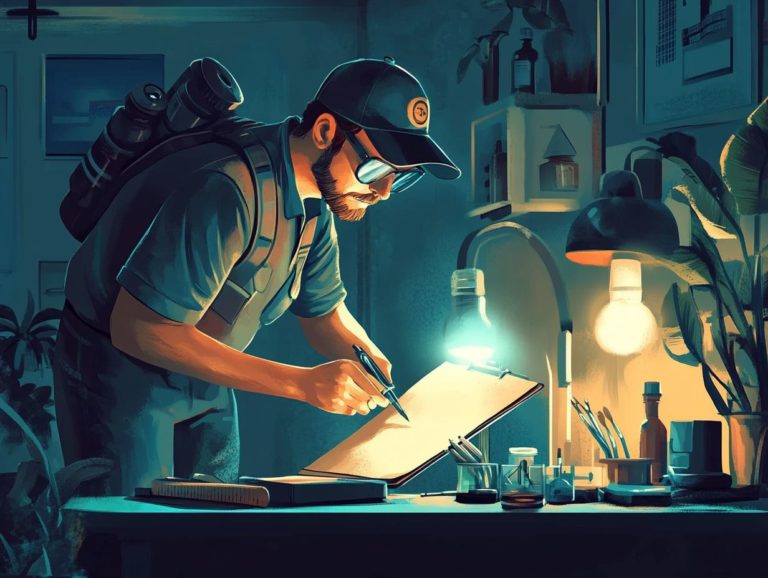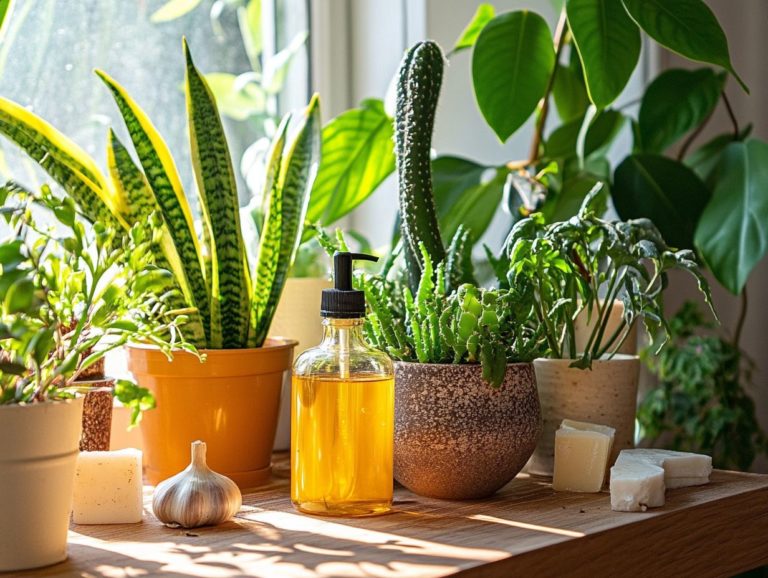Top 5 Most Destructive Indoor Plant Pests
Indoor plants bring joy and a touch of nature to your home. However, they can also invite unwanted pests.
From spider mites to aphids, a range of pests can pose a serious threat to the health of your beloved greenery. It s crucial to understand these invaders the ways they damage your plants, the signs of infestation, and effective prevention and control methods to ensure your indoor garden remains vibrant and thriving.
This article delves into the top five most destructive indoor plant pests and provides the knowledge you need to protect your plants from their serious threats.
Contents
Key Takeaways:
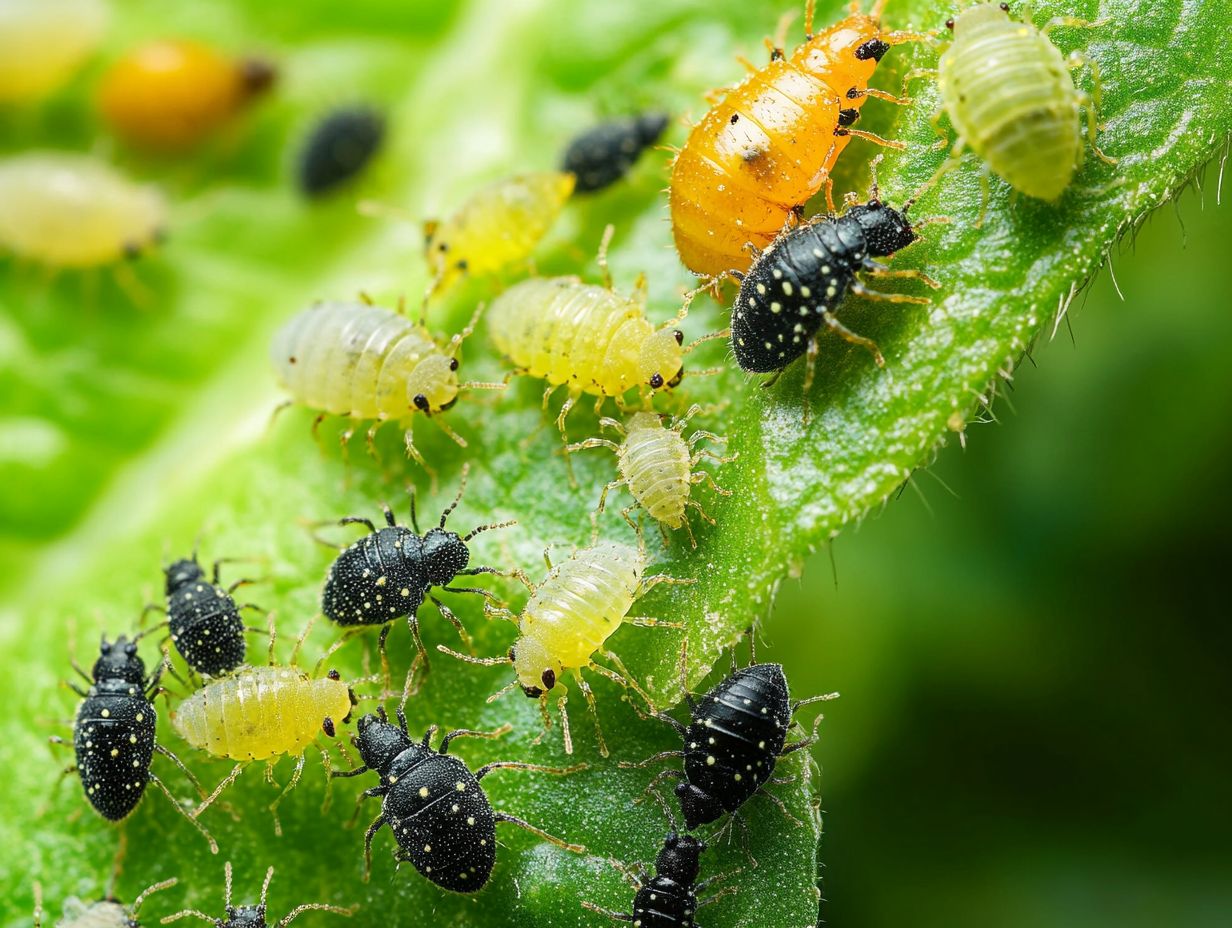
- Spider mites, fungus gnats, mealybugs, scale insects, and aphids are the top 5 most destructive indoor plant pests.
- These pests damage indoor plants by feeding on their leaves, roots, and stems, leading to wilting, yellowing, and stunted growth.
- Inspect your plants regularly, avoid overwatering, use natural pest control methods, and maintain a healthy environment to prevent these pests.
1. Spider Mites
Spider mites are tiny arachnids that target your indoor plants, especially fiddle leaf figs and African violets. Pest control is crucial for your plant care routine.
Their life cycle is fast, moving through four stages: egg, larva, nymph, and adult. Under the right conditions, their population can surge within weeks.
Typically, they thrive in warm, dry indoor environments, often going unnoticed until you see significant damage like stippling on leaves or fine webs.
To detect spider mites effectively, conduct a careful visual inspection or use a simple sticky trap. For control, consider applying insecticidal soap or neem oil; these treatments disrupt their life cycle without being too harsh.
Remember, a bit of tender loving care (TLC) goes a long way. Monitoring humidity levels and your plants health can help ward off these invaders, ensuring your indoor garden remains vibrant.
2. Fungus Gnats
Fungus gnats are pesky intruders that thrive in moist soil. They pose a serious threat to your young plants by feeding on their roots and introducing harmful pathogens.
These tiny, winged insects reproduce rapidly, so identifying them early is essential to mitigate damage. Look for adult gnats buzzing around your plants or larvae in damp soil.
If allowed to run rampant, these pests can compromise plant health, leading to stunted growth or even death.
Combat fungus gnats by letting the soil dry out between watering. Sticky traps can work wonders, and introducing beneficial nematodes will help keep their population in check. Regularly monitoring the soil and maintaining proper drainage will further prevent infestations, ensuring your plants remain healthy.
3. Mealybugs
Mealybugs are soft-bodied insects that can damage your indoor plants, like jade and gardenias. They suck plant sap, which can lead to health problems if you don t act fast.
You ll typically notice these pests as small, cotton-like clusters on stems and undersides of leaves. If left unchecked, they can multiply quickly, with females laying hundreds of eggs within weeks an alarming escalation.
The damage they inflict manifests as yellowing leaves and stunted growth, undermining your plant’s vitality.
To tackle mealybug infestations, use neem oil or insecticidal soap. These treatments penetrate the insects’ protective coating and disrupt their life cycles. Maintaining proper plant health through regular watering, adequate lighting, and good air circulation creates an environment that s less inviting to these pests.
4. Scale Insects

Scale insects are infamous pests that latch onto your plants, including citrus trees and Coleus, wreaking havoc by sucking the sap and requiring quick control measures to avert a full-blown infestation.
These minuscule, often elusive insects come in various forms, such as armored scale and soft scale. Each boasts its own lifecycle and unique characteristics. Typically, their lifecycle begins with an egg stage, followed by immature nymphs that settle on your plants. They eventually mature into adults that can reproduce very quickly.
Signs of an infestation to watch for include yellowing leaves, wilting, and a sticky residue known as honeydew a sugary liquid that pests excrete which can pave the way for sooty mold growth.
To tackle this issue effectively, it’s crucial to meticulously inspect your plants and consider using insecticidal soap as part of a comprehensive strategy. Ensure that every surface is covered for maximum efficacy.
Introducing natural predators like ladybugs can help control scale populations and foster a healthier garden ecosystem.
5. Aphids
Aphids are those small, sap-sucking pests that can swiftly take over your indoor plants, including beloved varieties like ivy and fig. Early detection and control are essential for maintaining the health of your plants.
These tiny insects come in a variety of colors green, black, and yellow making them tricky to spot at first glance. You’ll often find them congregating on the undersides of leaves and tender stems, voraciously feeding on your plant’s nutrients and gradually weakening its health. Being aware of the top signs of indoor plant distress can help you act quickly to protect your plants.
Be on the lookout for signs of an infestation, not just the insects themselves, but also the sticky honeydew they excrete. This substance can attract other pests and lead to the unsightly growth of sooty mold.
To combat aphid infestations, you can turn to insecticidal soap or introduce beneficial insects like lacewings. These natural predators feast on aphids and can help maintain a harmonious ecosystem within your plants’ environment.
How Do These Pests Damage Indoor Plants?
Pests like spider mites, mealybugs, and aphids pose a significant threat to your indoor plants by feasting on their sap. If you don t act swiftly with infestation control measures, you risk weakening the plant’s structure, stunting its growth, or, in the worst-case scenario, causing its demise.
These pests drain essential nutrients and can also undermine the plant’s immune system, rendering it susceptible to diseases that could further sap its vitality. When your plant is under constant assault, its overall health deteriorates, leading to yellowing leaves, wilting, and a noticeable decline in flowering or fruiting.
Regular monitoring is crucial for your plants’ survival! By keeping a watchful eye on your plants, you can catch early signs of pests before they escalate into a full-blown crisis. Embracing proactive care such as maintaining proper humidity, ensuring good air circulation, and implementing targeted treatments is vital for keeping your plants thriving and healthy.
What Are the Signs of an Infestation?
Identifying the signs of pest infestation in your indoor plants is essential for effective care. Look out for indicators such as yellowing leaves, webbing from spider mites, and the presence of sticky honeydew these are all red flags signaling a potential problem.
In addition to these common warnings, pests like mealybugs often leave behind a cotton-like substance on stems and leaves, making them easy to spot. Scales can appear as small, flat bumps on plant surfaces, often going unnoticed until you start to see your plant’s health decline. It’s also wise to pay attention to behavioral changes; for instance, wilting or stunted growth could indicate an underlying issue. To better understand the myths surrounding pests, check out the top 7 indoor plant pest myths debunked.
Don’t overlook the importance of inspecting the soil, especially for fungus gnats, which thrive in damp conditions and can lead to root rot if not addressed promptly. By knowing these signs, you can enable yourself to take timely action and keep your plants thriving. For more information, check out common indoor plant pests.
How Can You Prevent These Pests from Invading Your Indoor Plants?
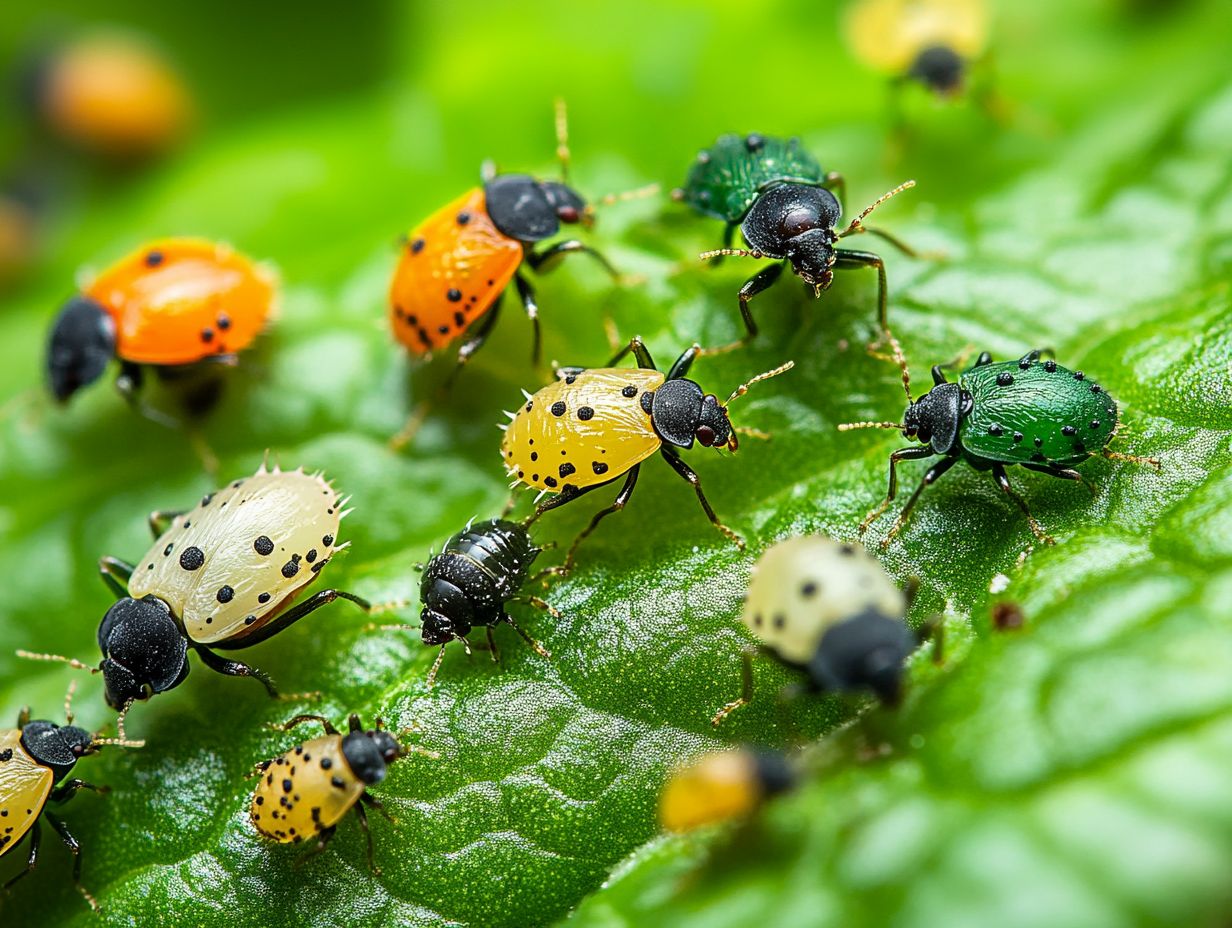
Preventing pests from taking over your indoor plants requires your unwavering attention and care. This means mastering proper watering techniques and conducting regular inspections.
Welcoming beneficial insects to your space for natural pest control is also key. Along with these practices, keeping humidity levels just right is essential since pests tend to thrive in overly moist environments. To better understand how to manage these issues, consider learning about indoor plant pests and their impact.
Overwatering is another pitfall to avoid; it can lead to root rot and attract unwanted insects that you definitely don’t want around. Turning to organic solutions like neem oil not only acts as a deterrent but also ensures a safer option for the ecosystem in your home. For more effective options, consider the top 5 pest control products for houseplants.
By cultivating a habit of routinely monitoring your plants, you ll be able to spot any signs of infestation early on. This allows for timely interventions that can save your greenery from significant damage.
What Are the Best Ways to Get Rid of These Indoor Pests?
The most effective ways to eliminate indoor pests involve using targeted treatments like neem oil and insecticidal soap. Pair these treatments with cultural practices that foster plant health and resilience.
To make the most of neem oil, start by mixing it with water according to the label instructions. This ensures you achieve the right concentration that won t harm your plants. Spray the solution directly onto the affected areas, paying special attention to the undersides of leaves, where pests often like to hide.
For insecticidal soap, a similar strategy applies: mix it with water and apply it thoroughly to help control those unwanted insect populations. Don’t overlook manual removal techniques. Wiping off larger pests or using a vacuum for smaller infestations can be quite effective.
Traps can be particularly useful for monitoring and reducing fungus gnat populations. Employing yellow sticky traps can significantly aid in managing these pesky invaders. Each of these methods plays a vital role in a holistic pest management strategy, ensuring your indoor garden remains healthy and vibrant.
Are There Any Natural Remedies for Controlling These Pests?
Natural remedies for controlling pests in your indoor horticulture can be remarkably effective. Consider introducing beneficial insects like ladybugs and making some homemade insecticidal soap to reduce chemical exposure.
These methods not only help you maintain the delicate balance of your indoor ecosystem but also promote a healthier growing environment. When you choose natural solutions, you ll often discover that these strategies target pests effectively without disrupting beneficial microorganisms.
By harnessing nature s allies and creating simple pest deterrents at home, you can significantly reduce your reliance on chemical treatments. This shift highlights the importance of environmental stewardship, which fosters a more sustainable gardening approach and leads to happier, healthier plants.
How Can You Keep Your Indoor Plants Healthy and Pest-Free?
Maintaining the health and pest-free status of your indoor plants requires a dedicated approach. Consistent care routines come into play, including mastering the art of proper watering and creating the ideal light conditions.
Regular inspections for any signs of pests ensure long-term vitality. It’s also essential to cultivate appropriate humidity levels to discourage pest infestations and foster lush growth.
Selecting high-quality soil is equally important. It supports nutrient uptake while minimizing the risk of disease that could threaten your plants, such as citrus trees and African violets.
Pay attention to air circulation around your plants. Good airflow helps prevent mold and mildew, making the environment less inviting for unwelcome pests. Regular inspections are crucial. By spotting issues early, you can make necessary adjustments before they escalate, keeping your plants thriving and pest-free!
Frequently Asked Questions About Indoor Horticulture
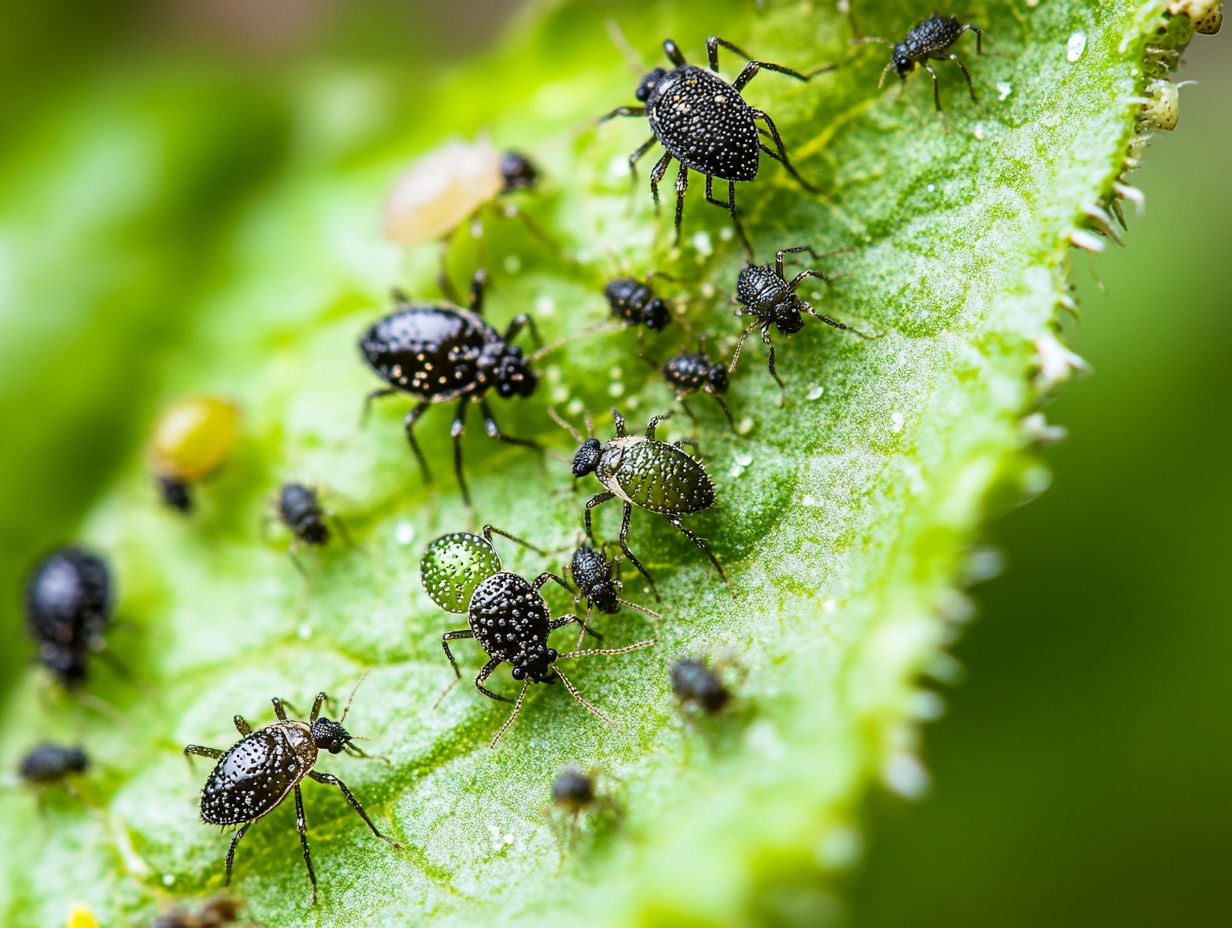
What are the top 5 most destructive indoor plant pests?
The top 5 most destructive indoor plant pests include spider mites, mealybugs, whiteflies, scale insects, and fungus gnats.
How do spider mites damage indoor plants?
Spider mites suck the juice from plants. This feeding causes yellow leaves, stunted growth, and can lead to plant death if not controlled.
Can mealybugs be easily identified on indoor plants?
Spotting mealybugs on your plants is crucial! They’re small, white, and look like cotton, making them easy to find on stems and leaves.
What are the signs of a whitefly infestation on indoor plants?
Look for yellowing or wilting leaves and sticky honeydew residue. Small, white flying insects appear when the plant is disturbed.
How do scale insects harm indoor plants?
Scale insects pierce plant tissues to suck out juices. This feeding weakens the plants and can lead to severe damage.
Are fungus gnats harmful to indoor plants?
Fungus gnats aren’t harmful to mature indoor plants. However, their larvae can damage roots, stunting growth and increasing vulnerability to other pests.

